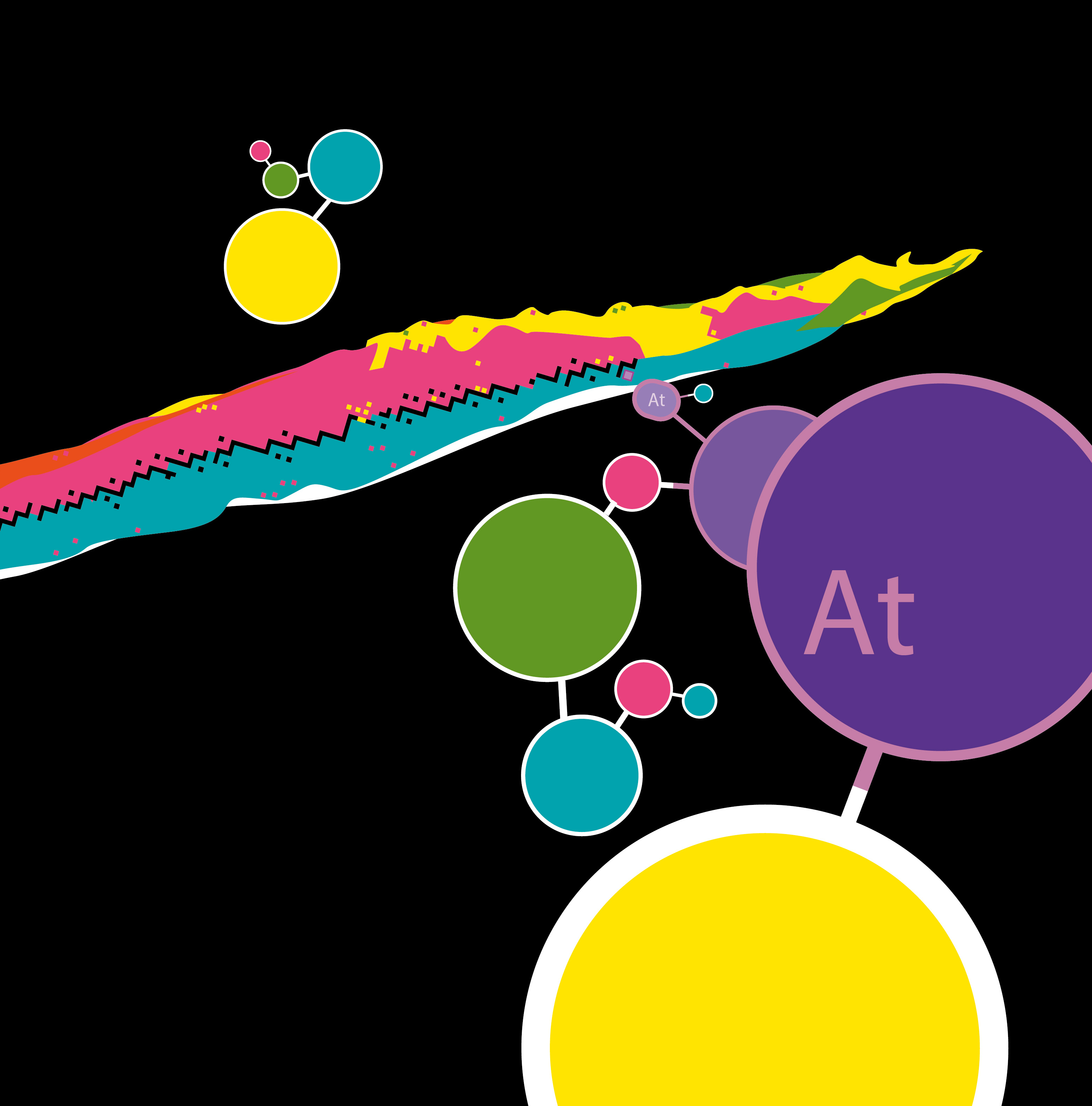Astatine halogen bond finally revealed!
Astatine is the last member of the halogen family, which also includes fluorine and chlorine. These chemical elements have a distinct feature: they are able to form an unusual kind of bond with molecules. Yet for astatine, the existence of this specific halogen bond had never before been proven. This is because in its natural state, astatine is the rarest element. Now all that has changed. The bond was revealed thanks to work by Subatech (a research unit including IMT Atlantique, CNRS and the University of Nantes) and the CEISAM. Their results have been published in the prestigious journal Nature Chemistry on March 19th.
Fluorine, chlorine, bromine, iodine? Toothpaste, swimming pool, photographic film, fish! Four chemical elements, and four objects that even those of us who are unscientific can associate with them. At first glance, brushing your teeth and swimming have little in common. And yet the four chemical elements mentioned above are all part of the same family: the halogen family. In fact, incandescent “halogen” lamps owe their name to the iodine and bromine contained in their bulbs. This just proves that in our lives we are often in contact with halogens, sometimes daily, for example with the chlorine that makes up half of our table salt (the other half is sodium). These elements are also well known to chemists, who in the early 20th century brought to light their ability to create an unusual type of bond: the halogen bond. These bonds are weaker than typical chemical bonds yet are significant enough to play a role in the development of liquid crystals, conductive polymers, and nanoporous materials.
However, this chemical family includes an element that is more discreet. Astatine, the fifth and last member of the group, is not very sociable: you’re unlikely to have come across this one during your lifetime. This is because scientists estimate the entire amount of astatine in the earth’s crust at less than 30 grams. It is the least abundant of all the elements naturally present on Earth. Its scarcity makes it difficult to study, and researchers even questioned its ability to form halogen bonds. The mystery was even more intriguing since experience so far had shown a link between the atom’s property and the strength of the halogen bond—astatine was suspected to be the source of the strongest halogen bonds. However, this still needed to be proven experimentally.
Now this has been accomplished, thanks to the Subatech and CEISAM teams, research laboratories which include participants from IMT Atlantique, CNRS and the University of Nantes. The work published on March 19 in the prestigious Nature Chemistry journal not only revealed astatine’s ability to create a halogen bond but confirmed that it is the strongest of its kind. These results greatly contribute to understanding this element which is so difficult to study due to its extreme rarity. “The halogen bond shows that it is possible to form stable molecular structures with astatine,” explains Julie Champion, a chemist at Subatech. “This is very interesting for alpha-immunotherapy applications in particular.”
This radiotherapy technique involves introducing molecules which emit specific radioactive radiation—alpha particles—into the body to target cancer cells for example. Since some astatine isotopes are radioactive and emit alpha radiation, the element is considered to be a good choice for alpha-immunotherapy. Moreover, its scarcity stems from its short lifespan: after approximately eight hours, the astatine-210 isotope, which has the longest lifetime, was already half disintegrated. This characteristic represents a great advantage for treatment, since astatine’s rapid disintegration limits side effects. Yet difficulties remain despite the first encouraging in vitro and in vivo attempts. The revelation of astatine’s potential to form halogen bonds opens new areas to explore with the goal of strengthening the connection between astatine and new biomolecules, which could potentially lead to more effective protocols for alpha-immunotherapy.
Working with the rarest element in the world
To demonstrate the existence of this bond, researchers had to adapt to the chemical element’s constraints. “We worked with isotope 211, which has an even shorter lifetime than isotope 210: after three days there is not enough astatine left for the experiments,” Julie Champion explains. The chemists had to be cunning. First, it is impossible to extract a few grams of astatine from the Earth’s crust; it must be produced artificially. “This is why we work with the Arronax cyclotron in Nantes. This instrument is a particle accelerator used specifically for the alpha particles we use to bombard a target containing bismuth atoms. The resulting nuclear reaction produces astatine,” the researcher explains. The race against time begins for the synthetic halogen.
It is then extracted in chloroform and transported by truck to Subatech. The precious radioactive cargo must first undergo radiation protection inspections before being inserted into small test tubes which will be used for the radiochemistry experiments. “It is important to understand that we are working at the ultra-trace level,” explains Julie Champion. The quantities are so low that we cannot see the element we are studying and cannot study it using the usual spectroscopic methods.”
How then can astatine’s halogen bond be revealed in this situation? For the solution, the chemists employed techniques from nuclear metrology. These tools make it possible to detect radioactivity within the sample. Two immiscible liquid phases are present in the test tubes. The first is an aqueous phase, containing the chemical species that are soluble in water. The second phase is called organic and contains the chemical species which are not soluble in water. The principle is the same as that of a drop of oil in a glass of water: the two liquids do not mix. Astatine, as it is extracted from the cyclotron, is usually present in the aqueous phase. However, when it forms a halogen bond with a molecule composed primarily of carbon and hydrogen, the astatine returns to the organic phase. By observing the radioactive emissions—in other words astatine’s signature—in both phases, the chemists were able to see astatine transitioning from one phase to the other.
In addition to the alpha-immunotherapy applications, this discovery paves the way for further research. In the experiment that was carried out, the Subatech and CEISAM teams formed a classical bond between astatine and an iodine atom to form a halogen bond with a molecule. Yet iodine can also form a halogen bond! Could it therefore be possible to create two halogen bonds, one with astatine and the other with iodine? This is the type of question that Julie Champion and her colleagues hope to study soon.




Leave a Reply
Want to join the discussion?Feel free to contribute!